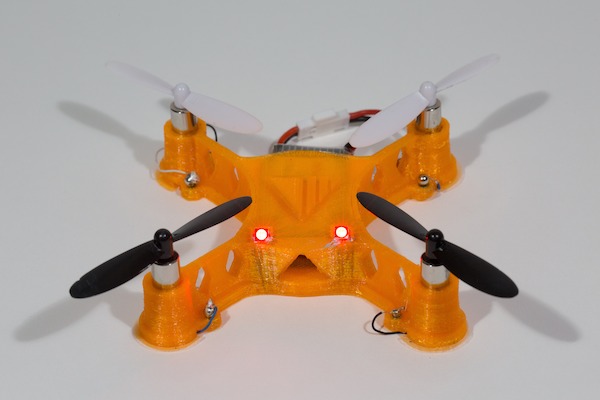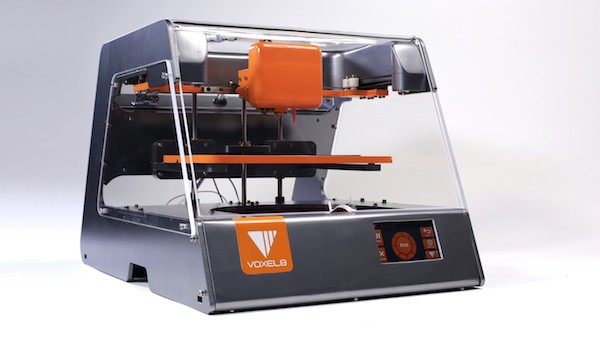
Though it was by no means prophetic, 3-D printing is one of the materials science wonders that I decided to keep an eye on in 2015. Today almost any material can be deposited with a 3-D printer it seems, thanks to advances in all directions.
[There’s even a pen that can doodle in 3-D.]
Jennifer Lewis and her Harvard research group have been up to their knees in 3-D-printing of a vast area of materials—including tissue constructs, strain sensors, and cellular composites. Not too long ago, I wrote about other work from Lewis’s lab—those silicone-encased baking soda balls that mop up carbon dioxide. But in addition to planet-cleaning research, Lewis and group are pioneering 3-D printing in a new direction: electronics.
The group is the first to develop and market a 3-D printer that can incorporate conductive inks and plastics into 3-D printed electronics through their spinoff company, Voxel8. The company—founded by former Lewis lab graduate students Michael Bell and Travis Busbee—uses core technology based off of a decade of research in Lewis’s lab.
“Voxel8 exists to disrupt the design and manufacture of electronic devices by providing new functional materials with a novel 3D printing platform,” according to the company’s website.
Credit: Voxel8: 3D Electronics Printing; YouTube
Voxel8’s printer incorporates interchangeable printheads that pneumatically dispense multiple materials. Its highly conductive silver ink has a bulk electrical resistivity less than 5.0 x 10-7 Ω-m, which the company says is more than 5,000-times more conductive than standard carbon-based inks used in 3-D printing and 20,000-times more conductive than the best conductive-filled thermoplastic filaments.
In addition to the ink’s conductive superiority, it can be printed at room temperature through a 250-micrometer nozzle, affording compatibility with a wide range of materials. And—added bonus—the ink doesn’t even require a supportive substrate. “Our inks can hold their shape, span large gaps, and connect to electrical devices, such as TQFP chip packages, without short circuiting,” the website states.
If you can cough up $8,999, you will fast-track to the front of the line to get the first of the electronics 3-D printers and early access to new materials, according to the website.
The website also hints that the team isn’t done with the printer’s capabilities yet: “Our initial efforts have focused primarily on conductive inks. However, we have many new materials in the pipeline for future release, starting with advanced matrix materials. The modularity of our cartridge system will allow designers and engineers to use the same printer to print many materials with widely varying electrical and mechanical properties …Voxel8 will leverage ink designs from the Lewis research group, including those that enable 3D printing of resistors, dielectrics, stretchable electronics and sensors, and even lithium ion batteries.”
What would you create with a 3-D electronics printer?



